How Your Flow State Can Help Productivity

When was the last time you felt fully engaged in a task and the hours just melted away? That’s called your flow state, something that psychology researcher Mihaly Csikszentmihalyi, from Claremont Graduate University in California, identified. Here’s how your flow state can help your productivity!
Flow is simply that state of mind in which we feel and perform our best and feel at ease. We don’t have to wait for a flow state to happen — we can take steps that can allow us to access it.
Here are the 2 steps needed to tap into your flow state.
- First, you must observe yourself. For the next two weeks, observe yourself, notice what you’re doing, and look for the clues of flow: losing your sense of time or self, feeling that you’re acting with ease, gaining new insights, and having a positive feedback loop.
- Then, when you are in a state of flow, broaden your awareness: Notice and remember the activities surrounding you. Recognize what you’re physically doing and think about what you’re doing mentally.
Tell us your tips and tricks for staying productive!
3 Types of Alternative Black Friday Campaigns
Calling Black Friday the biggest shopping event of the year is an understatement. In 2019, consumers spent $7.4 Billion online alone. This year more than ever, online spending is expected to grow. What are some ways to stand out online this holiday season?
Instead of the usual ‘one-day-only % off’ sale, campaigns focused on other things can be a great way to set you brand apart, gain awareness, and increase conversions. Here are three examples.
#1 – the Anti-Black Friday.
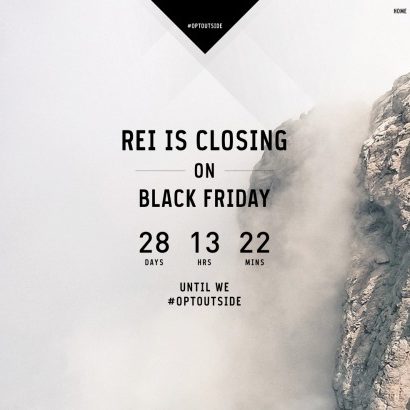
Taking a page from REI’s #OptOutside campaign, focusing on not buying anything on Black Friday can be very effective. Since 2015 REI closes on Black Friday and uses #OptOutside to encourage people to spend the day outside, which goes along perfectly with their brand mission and has helped grow their online community. Due to the longevity of the campaign and community it has created, the Opt Outside campaign helps increase REI sales year-round.
Another company using the Anti-Black Friday approach is the skincare company Deciem. In 2019, closed their stores and blacked out their website to protest the hyper consumerism focused Black Friday. Instead, their holiday campaign focused on “shopping slow.” For the entire month of November, every product was on sale. The longer, inclusive sale increased sales and helped reinforce their brand ideals with their customers.
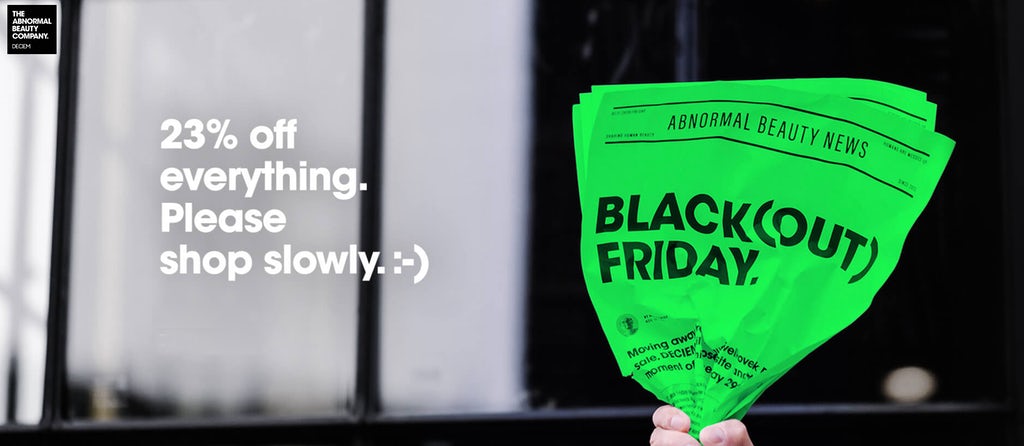
#2 Highlight Your Mission
Many companies use Black Friday as an opportunity to show their customers what their brand ideals are. Donating to charities is a popular way. For example, Patagonia is known for alternative Black Friday campaigns but one especially effective one was 2016. They pledged to donate all their Black Friday sales to grassroot organizations that aligned with their brand goals. The campaign ended up generating $10 million in sales, over 5xs their goal!

The fashion company Kotn did something similar. Instead of sales, they promoted that they were going to donate Black Friday weekend profits to a charity that builds schools in Egypt, where the cotton used in their products is grown.
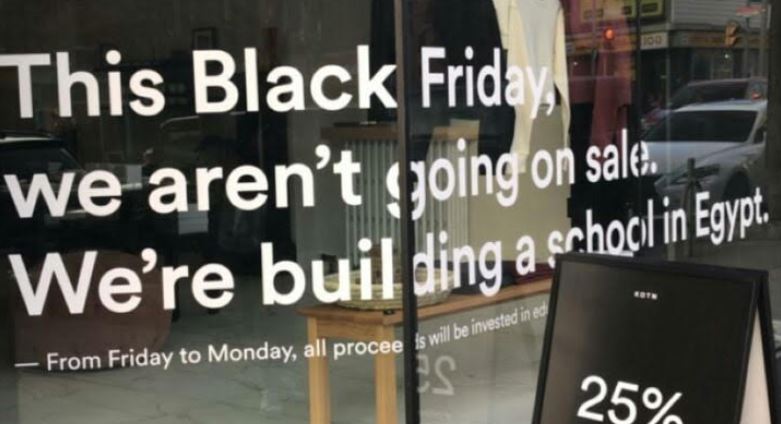
#3 Make it an event
A great example of this is MeUndies’ 2016 campaign. They promoted a Facebook live event for Black Friday. As more people joined, they unlocked more discounts and promotions. The event ended up with over 13,000 viewers and had a conversion rate of over 25%, which is 13x more than their average!
All of these brands used a day usually clogged with advertising to redirect their customer’s focus. They reminded people of their band mission and goals and helped strength their connection to their customers. What fun ways have you seen company handle Black Friday?
How To: Be A Team Player

Today the people in our work teams might be spread out across the country – or the world. It is easy to take it for granted that because of technology, we are able to work together and solve problems no matter where we are physically. The need for good teamwork will always be a necessity. What can you do to be good team player and help your team run smoother?
- Be humble. Unsurprisingly, being a good team player means not focusing on yourself or thinking that your ideas are the best. On the flip side, not having confidence in your ideas is also a violation of humility. As the saying goes: “Humility isn’t thinking less of ourselves; it’s thinking about ourselves less.”
- Be hungry. Be willing to hustle. People who have a strong work ethic are often successful on teams because they don’t do the bare minimum. They want to do more than expected. When everyone on a team works hard, things go smoother.
- Be smart. Have common sense. Think before you speak. Think about what effects your actions will have on the project and on your team members.
It’s important to be able to identify what gaps your team has. And to look at yourself and see what you can to do make things run smoother.
What have you found to help your team run smoother?
How to: Declutter Your Digital Space

Let’s be honest, having a totally cleaned out inbox or a completely crossed off to-do list is one of life’s great joys. Clean digital workspace can help your focus and productivity. So what can you do to declutter your digital space?
- Put in a gap. Cal Newport, a computer science professor at Georgetown University, said many people succumb to what he calls the list/reactive method: They instantly react to communication. That means answering texts, emails, messages as soon as they pop up and therefore constantly interrupting their workflow. Waiting to answer messages until a time that’s more convenient for you can help you stay focused and actually make progress on your work.
- Set a schedule. Set aside time to focus on work communications and then let your colleagues know when that is. Sticking to “office hours” can be surprisingly helpful.. Going from a Zoom video to a call with your kid’s school to texting about social plans with friends can blur the lines between personal and professional. Dr. Newport says, “It blends together the lives completely, You’re never not working. You always feel behind.”
- Take control of your inbox. If you have to delete tons of promotional emails everyday, the consider unsubscribing. Having less to go through everyday will save you time and help you feel like you’ve accomplished something at the start of your day!
- Streamline your workflow. If you are collaborating with a team, emails threads can get long and if you have multiple streaks of communication, it can get confusing. Having a streamlined and structured process “substantially reduces the number of simultaneous, asynchronous back and forth conversations happening,” Dr. Newport said.
What ways have you found to declutter your digital workspace?
6 Tips for Effective Content Marketing

According to HubSpot, nearly 70% of business are investing in upping their content production this year. What can you do to make sure your content stands out from the rest?
Here are six steps:
- Figure out what you want to accomplish. Goals are key to any plan. The Content Marketing Institute (CMI) suggests outlining your goals in a formal business plan. It will also be helpful to outline what value you are going to provide your customers with your content and any possible challenges.
- Figure out your audience. Knowing who you want to reach makes it much easier to know what type of content they’ll want to engage with.
- Remember your own branding. What do you want your customers to know about you? What problems can you solve for them? How are you different from your competitors? Knowing what your overarching message will help you choose the right type content and tone.
- Figure out what type of content your audience will respond to. There are so many different types of content, such as blog posts, eBooks, videos, podcasts, webinars, newsletters, etc. However, not all of them will be effective for your audience.
- Keep a schedule. You’ll need a clear plan of attack, especially if different parts of your organization will be involved in content. HubSpot recommends implementing an editorial and a social media calendar. To keep tract of when are where content is going out. Doing so will also help keep your messaging cohesive.
- Keep track of engagement. Keeping track of analytics will help you learn your content’s effectiveness. You can use what you’ve learned about what works or your audience to inform upcoming decisions and make your content continually more effective.
Want more information on how to make your content marketing more effective? Get in touch here.
How to Increase Your Adaptability

If this year has taught us anything it’s that being to react well to inevitability of change is a must-have trait. In venture investor Natalie Fratto’s TED Talk on adaptability, she focused on how we can work on a becoming more adaptable in the workplace.
Here are her three suggestions:
- Be proactive. Fratto says,“Adaptability has to be proactive, not reactive. We have to seek it out, exercise it and flex it like a muscle.” How can you seek out adaptability? Start by looking for gaps in your organization that need filled. For example, is your team having a hard time communicating with the podcast team? Take the opportunity to learn about podcasts and help bridge the communication gap. Putting yourself in a position to help can make it easier to adapt to new roles later.
- Look at things from another point of view. Being agreeable can actually be the opposite of adaptability. Occasionally (and respectfully) playing the devil’s advocate can help you and your team see things from a different viewpoint. This can prevent you from getting to attached to your opinions or view. Not being stuck to ideas promotes flexibility and creativity.
- Remember the times you changed your mind. “It’s helpful to write down the times where you were wrong, changed your mind, or made mistakes,” says Fratto. Instead of viewing the times you’ve made mistakes as negatives, view them in a more positive light. Focus on what you learned and how you were able to grow.
What ways have you had to adapt this year?
How To Digital Advertise Effectively

With things changing around us so quickly, having a long-term advertising strategy can be a challenge. We need real time audience data as much as possible. How can we build an adaptable audience in this rapidly changing world?
One of the biggest changes in advertising this year was the extreme shift to digital. In an eMarketer poll, 56% of people said that they increased their online shopping this year. And 14% said that they shopped online for the first time. The way we shop has also changed. Because of the increase in online shopping, we tend to make faster, more impulsive purchase decisions. What does that mean for advertising?
Before the necessary shift to digital, brands could interact with customers in a wide variety of ways, often spread out over large physical distances. Billboards, signs, posters, newspapers, and magazines all exist with in different physical spaces. With digital advertising however, we are all competing for the same ad space. That ad space is worth more now has less guarantees attached to it.
Having the right audience is the foundation for your campaign…..
Asking yourself simple questions about your clientele such are gender, age, income, and possible other interests can make it easier to target more efficiently.

What can you do then make sure your potentials are seeing your brand? Start with the right people. A lot of marketers view the audience as a small detail or a piece of the puzzle. Having the right audience is the foundation for your campaign. Asking yourself simple questions about your clientele such are gender, age, income, and possible other interests can make it easier to target more efficiently.
Having a general idea of your audience is a good first step. Slowing narrowing down that audience helps reduce costs. A trigger-based campaign is a good way to do that. For example, you can send an email to a large amount of people who fit your initial criteria rather cheaply. Since social ads are more expensive, you then only need to advertise to the people for clicked or opened your email. You can then retarget them with Direct mail. Learn about your audience from each channel individually then apply it back to your campaign as a whole.
As difficult as it can be to have to shift an entire advertising strategy, it can be also be a great opportunity for growth. Using different channels can help you take a step back and look at your campaigns and your potentials in a new light. What have you learned about adapting strategies this year?
Why Does WFH Have A Bad History?

Many companies (including our own) have been forced to adapt to WFH this year. Many of us enjoy working from home now and flexibility it offers. Why haven’t companies pushed WFH before?
Well, they have. And it hasn’t always gone well. For example, in 2009 40% of IBM’s 386,000 employees in 173 counties worked from home. In 2017, however, thousands of them were called back to the office. Why? Revenue was slumping, and as Kate Lister of Global Workplace Analytics says, “Working from home is a strategic move, not just a tactical one that saves money. A lot of it comes down to trust. Do you trust your people?”
Taking a global pandemic out of the equation, what are the advantages of WFH? Employees regain valuable time in not having to commute and are able to set their own work schedules. Working in your comfortable home environment can increase productivity. Employers can cut costs with smaller office spaces and amenities. They can also hire people from all over, not worrying about proximity to the office. Deeping the talent pool pushes diversity and in turn, innovation.
In late May 2020, Morning Consult surveyed US workers, 54% said they wanted to work remotely. But of those already working remotely, over 50% said they feel less connected to their company, which highlights a larger problem with WFH: management. Jody Thompson, who worked on Best Buy’s failed WFH program, said that part of the reason the program failed was that when the company was doing poorly, management began to fear that they were giving their employees way too much freedom. “It went back to a philosophy of ‘If I can see people, that means they must be working.” she said. And so, the employees when back the office.
A lot of companies have been surprised by the productivity increases
“People are shocked. No one found a drop-in productivity. Most found an increase.”

A lot of companies have been surprised by the productivity increases coming from WFH. John Sullivan, a professor of management at San Francisco State University said, “People are shocked. No one found a drop-in productivity. Most found an increase.”
Proving that the problem may not be the employees, but how they are managed. Now that everyone has to work remotely, it has helped many managers understand what it’s like to work from home and what their employees need to WFH effectively.
So, as Jody Thompson said, it all comes down to trusting your employees.
What do you think has caused WFH to fail in the past? DO you think that technology like Zoom will help working remotely succeed this time?
Do You Have A “Zoom Shirt?”
The “zoom shirt” is a trend born out of working from home. It’s too easy at home to not dress up for work at all. Or get out of your pajamas. And so, the “zoom shirt” became a quick way to reclaim some level of professionalism when on zoom business calls, but something you don’t have to wear all day while working from your couch.
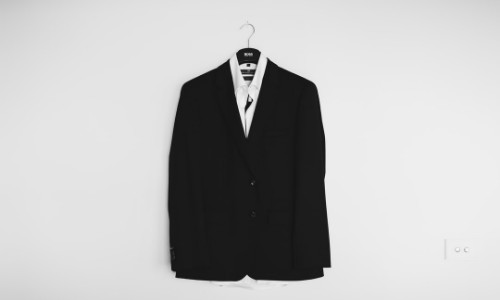
Adolf Loos, the Austrian architect said in 1903, that a person is properly dressed not when he stands out but when he is wearing the correct apparel for the moment at hand. Because the “moment at hand” is so unprecedented it can be hard to know exactly what the appropriate business attire actually is. We are all aware that we are sitting in our homes. That through zoom, we are viewing people in their informal setting. It can seem wrong to appear as we did before. Seeing someone in a suit sitting at their dining room table can be jarring. But on the other hand, a level of professionalism is excepted. Late night host Seth Meyer got a bit of backlash for dressing too casual for his show, which is now filming in his house. People said that his overly causal clothes undercut his delivery of important topics. So, there has to be a happy middle ground.
The office wear brand MM.LaFleur coined the phrase “mullet dressing” business on the top, party on the bottom. Having a simple go-to article of clothing nearby your workstation can make it easy to quickly look professional on camera at a moment’s notice.
Joe Farrell, the executive vice president of Funny or Die, has gotten so good at the zoom shirt he was interviewed about in in the New York Times. Farrell has a short sleeve button down shirt he keeps on the back of his chair. He has worn it for 70 consecutive days. He kept waiting for someone to notice and no one ever did. He says that every time he has told people about it, he expects them to call him out for it, instead all they do is tell him about their own zoom shirts.

Talking to the New York times about why he has continued to try and dress up for zoom meetings, Timo Weiland, the creative director of the fashion company that bears his name, said, “It’s about preserving a sense of professionalism in a formless environment, where the sense of urgency is gone. I have 7 to 10 Zoom meetings a day, and I feel far less prepared if I’m wearing a hoodie-and-pajamas look.”
What makes a good zoom shirt? It can be any article of clothing that you can quickly throw on to feel more professional: a scarf, jacket, a button down, sweater, anything really. The things that make a good zoom shirt are ironically similar to things that make good travel clothes. It needs to be easy to store, doesn’t get wrinkled easily, works for many types of social settings, and ideally doesn’t have to washed that often.
Do you have a “zoom shirt” already? What do you think makes a good zoom shirt?
The End Of The Cookie: Part 2
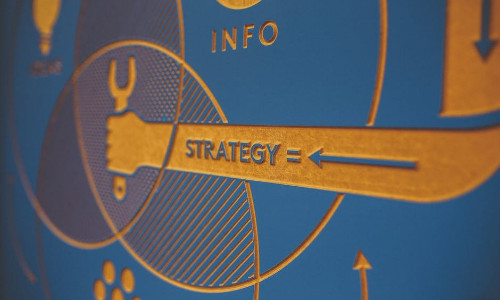
What is going to fill the void left by third party cookies? We know for sure that our reliance on data isn’t going to change. It’s the foundation of marketing. we are always going to need to know who our audience is.
Three third party cookie alternatives.
- Use browsers history only to influence impressions. This is a very simple option that wil be easy to implement because things like google analytics pretty much already do this. But because its browser specific it could make OmniChannel marketing a challenge.
- First party identity information. This solution creates a unique ID for your web use. This option is popular with a lot of people in the commercial industry because even though your data pool will go down, using unique ids will give a higher match rate. Meaning if one of these matched personal ids show up in your system, you’ll know for sure that they are a solid prospect.
- Aggregated consumer data. This is somewhat of a catch all option, using consumer data from multiple sources to cross refence and match information. One advantages of this option is that marketers we be able to learn more about their consumers. Although you will know more about them as people, it’s unlikely that you will be able to actually know who they are.
So, what now? Now is the time to figure out as much as you can about your audience. It will be more of a challenge to find out who your customer base is without third party cookies. Focus on diversify into omnichannel marketing to get a clearer picture of your audience. It is also a good time to plan out a marketing strategy. Figure out what companies you are going to need relationships with going forward.
What alternatives to you think are going to fill the void left by third party cookies?
